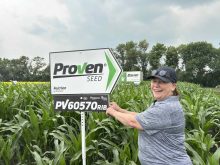People who choose farming and ranching as a career know they will face challenges. It’s important to be familiar with the start-up options and the more common tax considerations. Three business structures are available to new farmers and ranchers: sole proprietor, partnership and company. Sole proprietors will report their farming income or loss on their personal income tax return. The business usually incurs losses in the first year of operation because of the large start-up costs and significant assets that need to be purchased. These losses provide different tax planning options. Farming income will be added to any additional income earned during the year through employment or other business ventures. Farm losses can be applied against other sources of income if the farming operation is the primary source of income. As a result, the farm loss can reduce overall taxable income, which creates tax relief. Farming losses can also be carried back three years or forward 20 years. The farming loss deductibility is restricted for those who farm with the intention of making a profit but for whom farming is not their primary source of income. This applies to many people who have full or part-time jobs off the farm but still rely on farming to supplement their income. This loss restriction allows for a maximum of $8,750 of farm losses to be applied against other income when $15,000 of total farm losses are realized during the year. Actual loss beyond this amount is a restricted farm loss and can be carried back three years or forward 20 years, but can only be used against farming income. People who treat farming as a personal rather than a business pursuit are considered hobby farmers. In this instance, the farm loss is viewed as personal living expenses and is not deductible against other sources of income nor can it be carried forward.There is a tax planning strategy in the year of a farm loss that allows income to be added using either a mandatory inventory adjustment or an optional inventory adjustment.The mandatory adjustment is a required addition to a farm loss for the amount of purchased inventory held at year end. This adjustment requires the farm loss to be brought to zero if there is enough purchased inventory to cover the loss. The optional adjustment is additional income that can be added at the farmer’s discretion. Again, it is required that enough inventory be on hand at the end of the year to cover the total mandatory adjustment and optional adjustment claimed.The benefit of these income adjustments is that the amount added to income in the current year can be used as a deduction in the subsequent year. This can be a great tax planning tool that allows farmers to smooth earnings through the years if they incurred large losses in the first year of operations. Farmers who operate as a partnership are taxed as individuals along with their partners. As a result, the above discussion also applies to partnerships. The difference is that they record only their portion of the farm’s income and expenses from the year. It would be prudent to talk to a professional adviser about creating a partnership agreement to ensure it is set up appropriately so that there are no negative tax consequences. Operations organized as corporations are taxed as separate entities and the money removed from the corporation in the form of salaries or dividends are taxed in the farmers’ hands as individuals. Corporations can provide significant tax planning benefits for large operations, but farmers should consult with their tax adviser before incorporating to ensure it is the best decision for their business.Colin Miller is a chartered accountant and senior manager in KPMG’s tax practice in Lethbridge. Contact: colinmiller@kpmg.ca.
Read Also

Ag in Motion innovation awards showcase top 2025 ag technology
The 2025 Ag in Motion Innovation Awards celebrated winners across five categories: agronomics, agtech, business solutions, environmental sustainability and equipment.
















